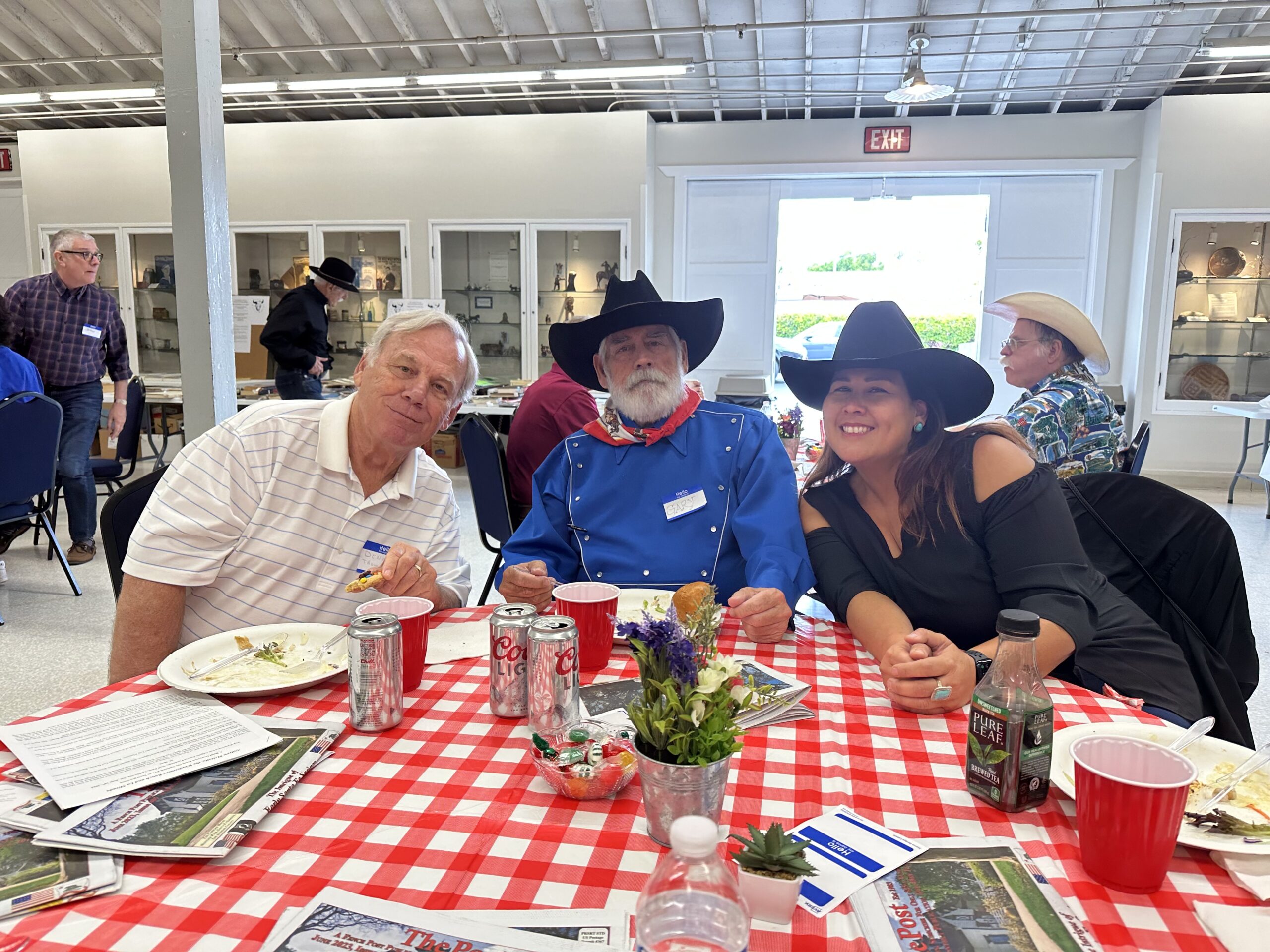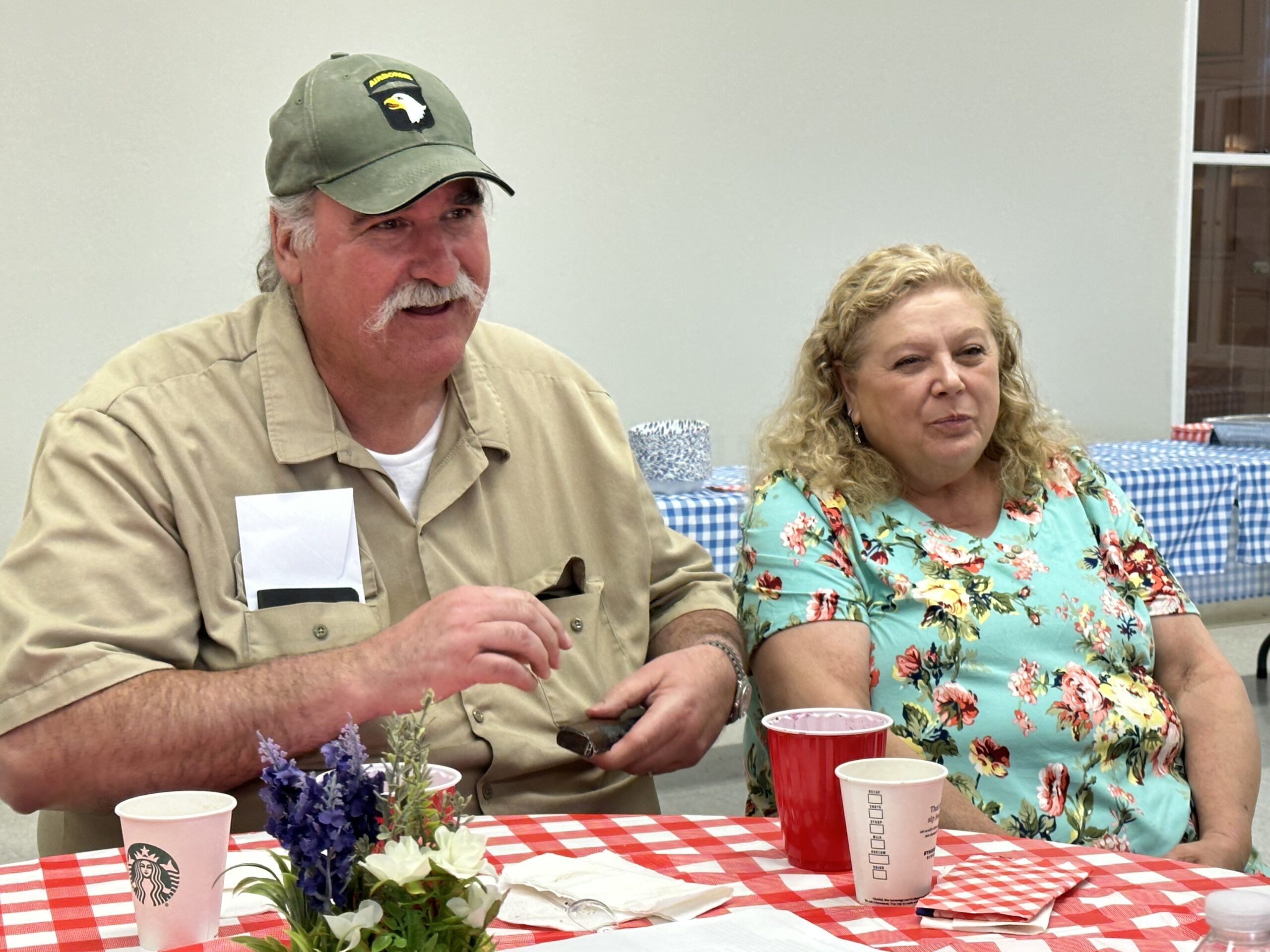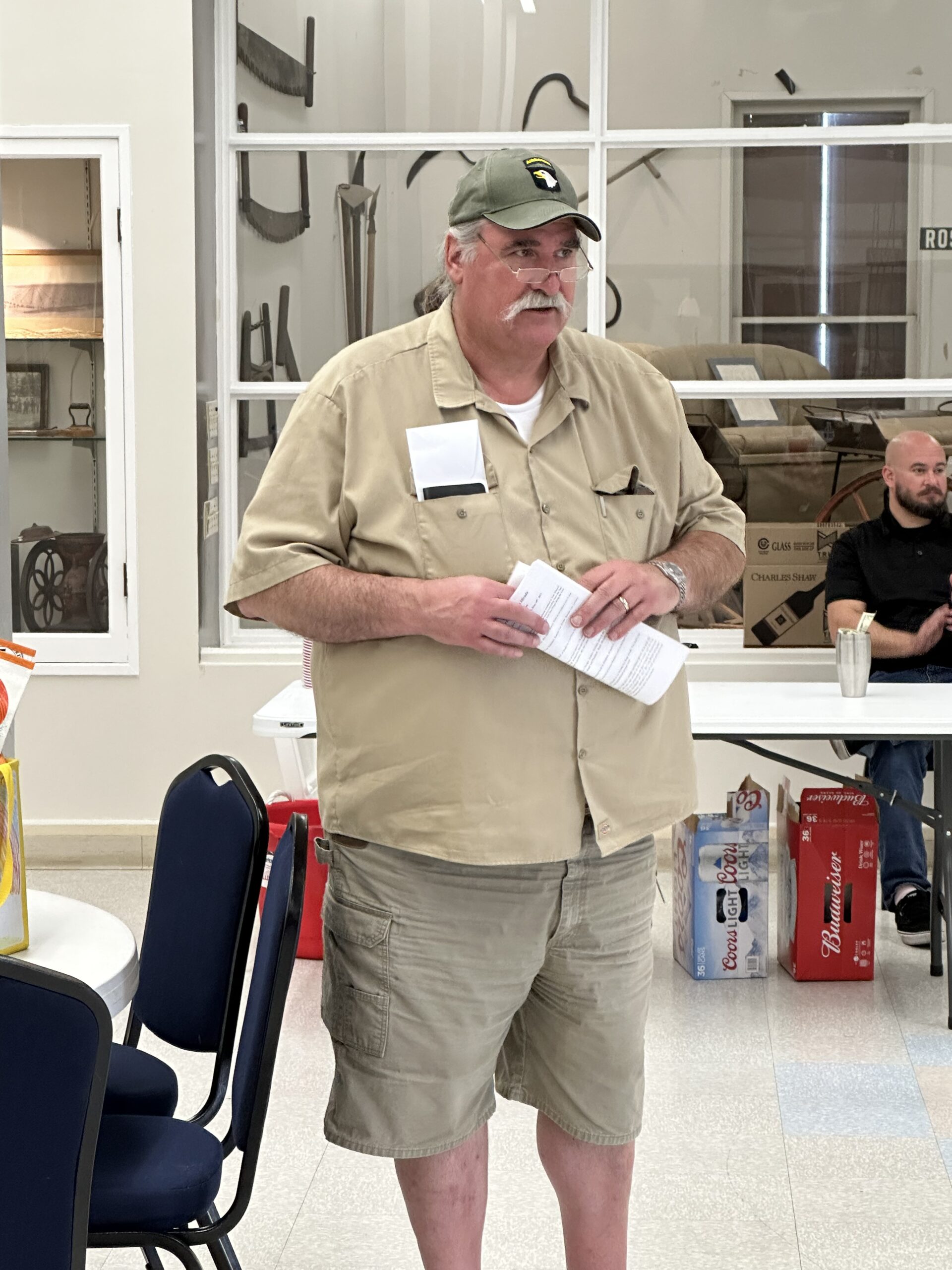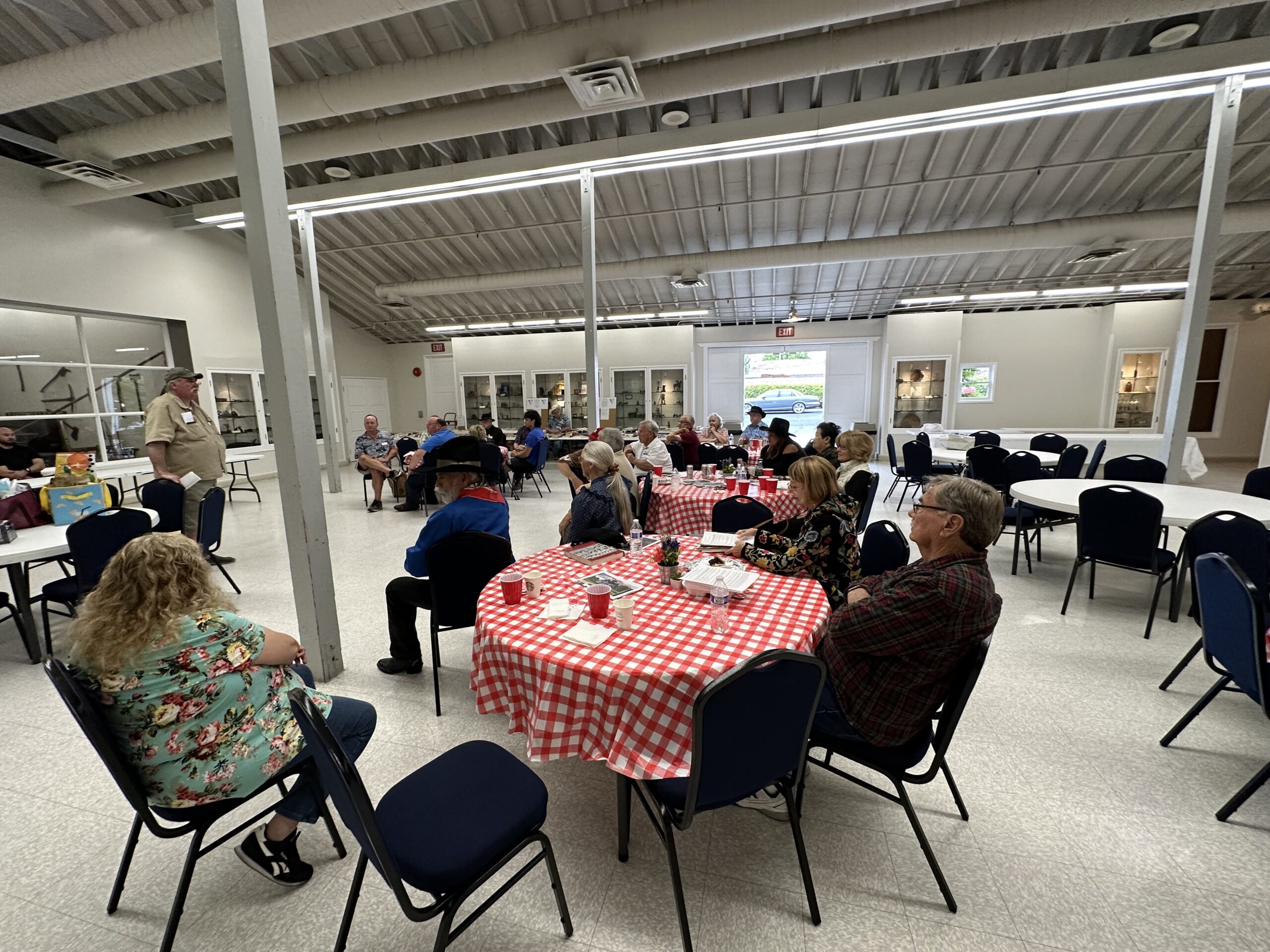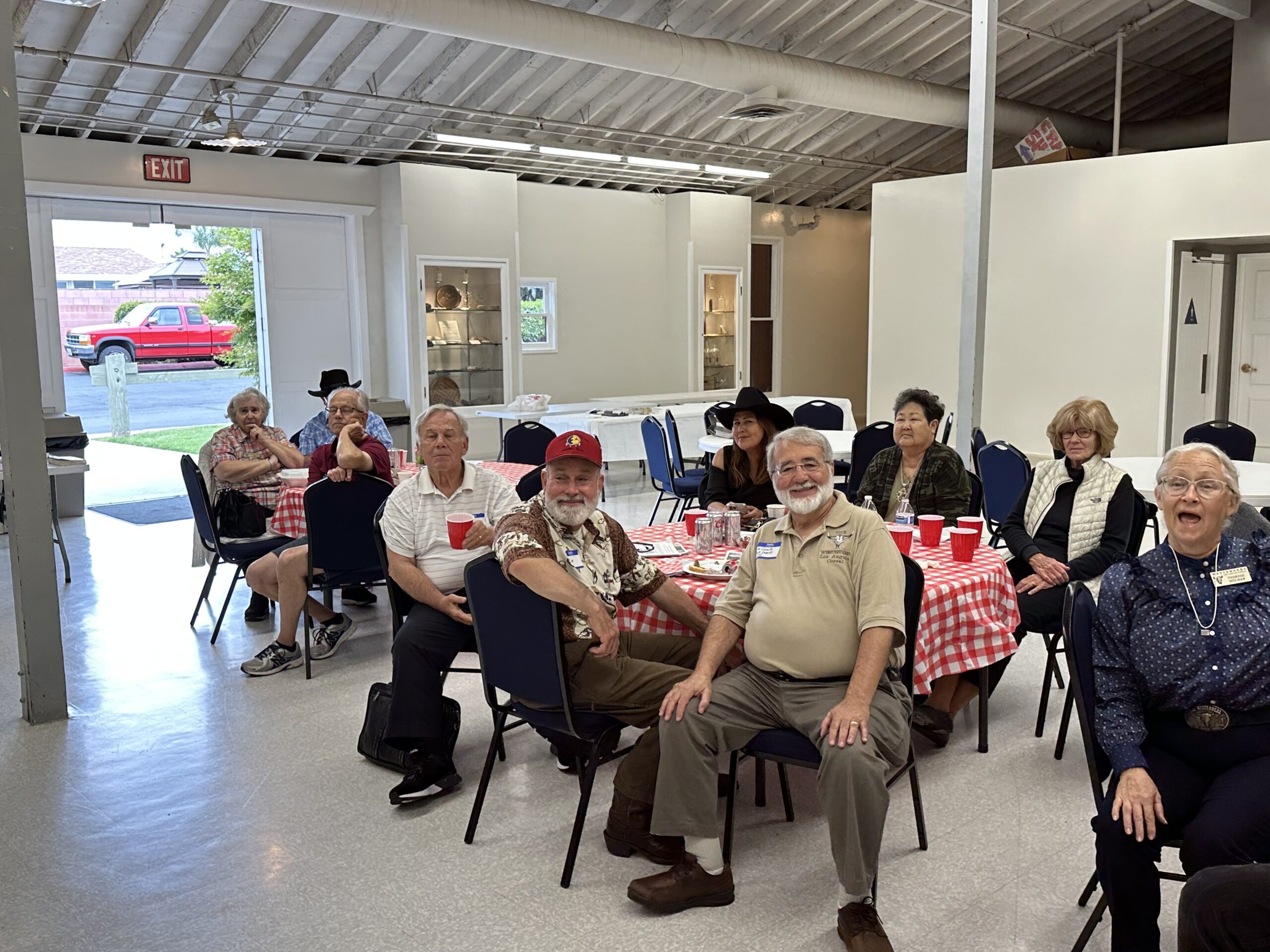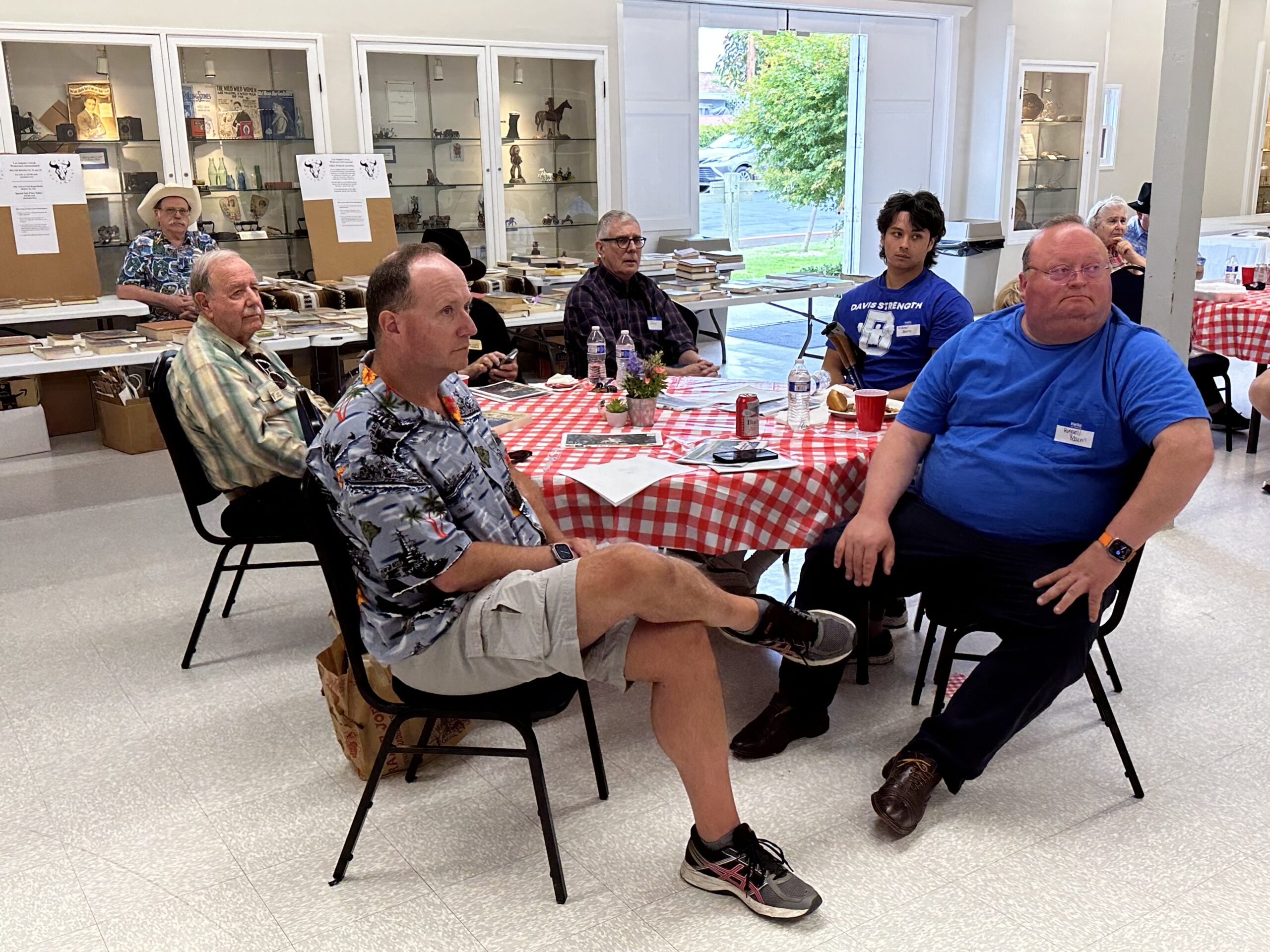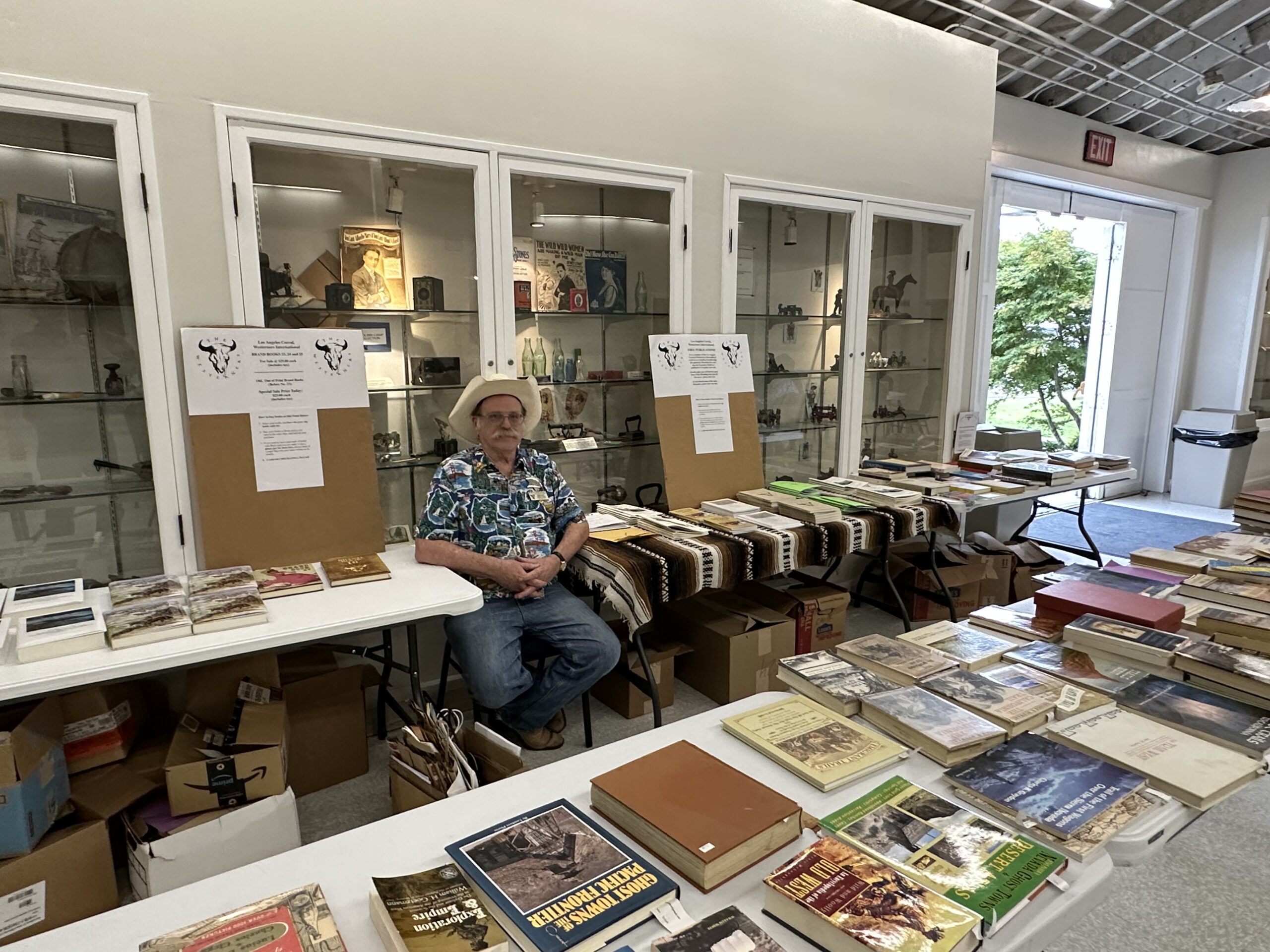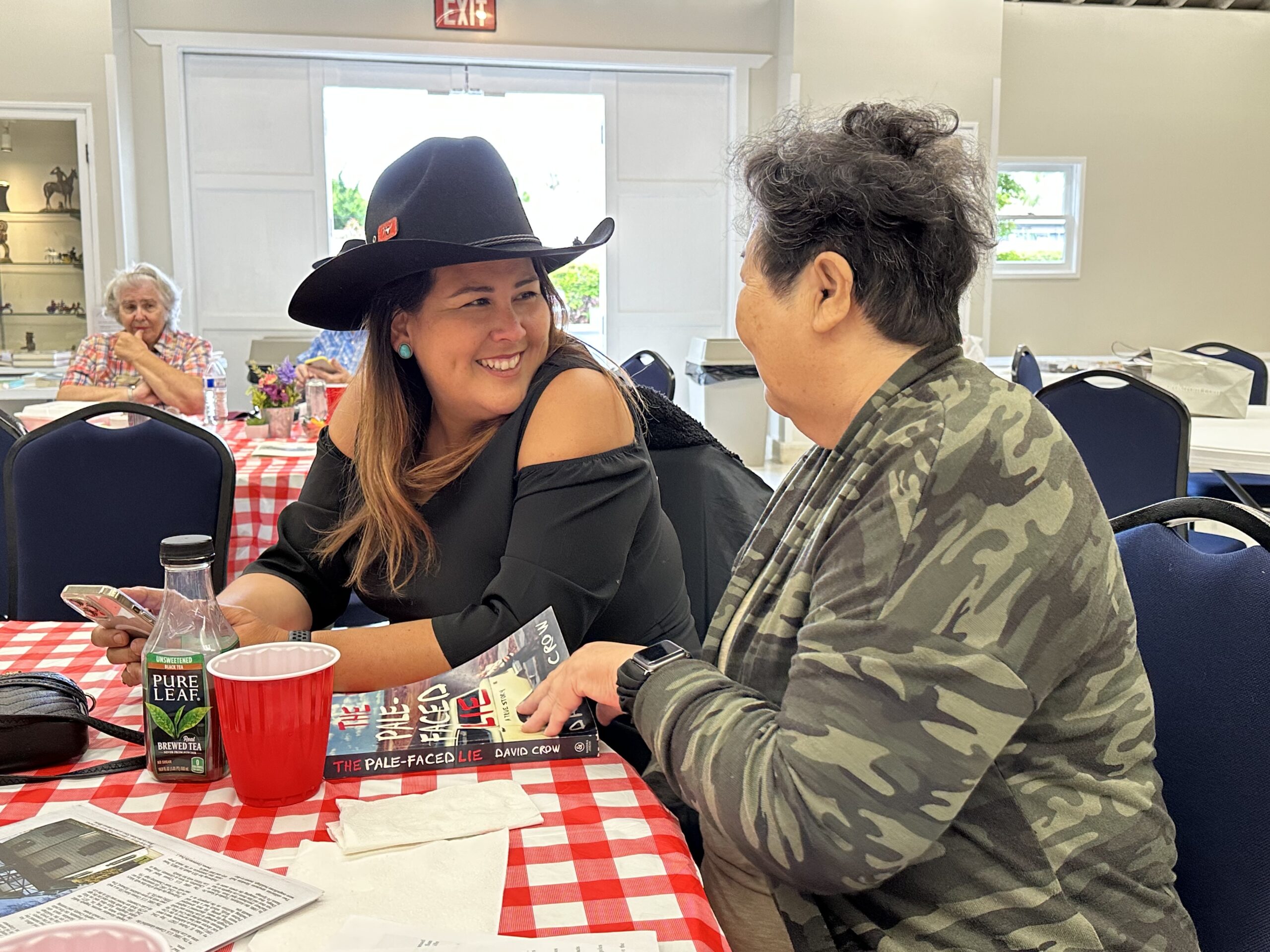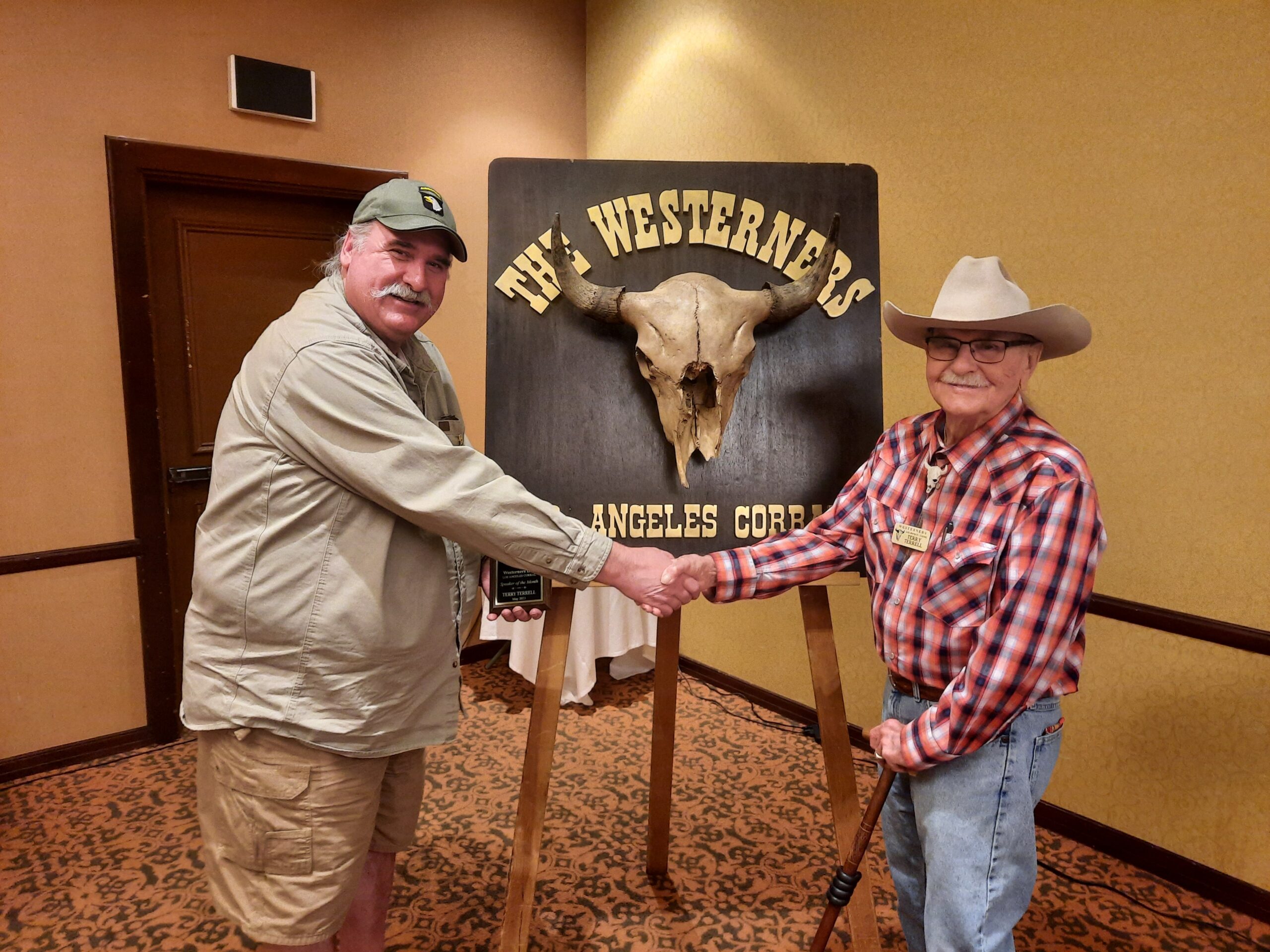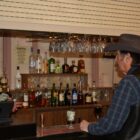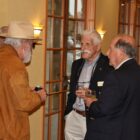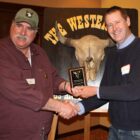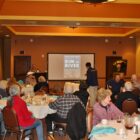Roundup: May 10 2023
Westerners-May-2023-IT-IS-A-GO-2
Roundup Synopsis
The Los Angeles Corral’s own Terry Terrell spoke at the May Roundup about the colorful, high-flying life of Florence Leontine Lowe, better known as Pancho Barnes. In another installment of what could come to be known as our Women of the West series—following Ed Anderson’s March talk, Pioneers in Petticoats—Terry directed our attention to the rich world of aviation and dude-ranching in the first half of the 20th century, that has become so emblematic of our own city’s historical character. Part rancher and restaurateur, part pioneering aviatrix and arial bootlegger, part hostess and perhaps even part madam, Pancho Barnes’ eccentric life added more than a few dabs of color to the mural of her unique character.
Though she was born Florence Leontine Lowe, granddaughter to Thaddeus Lowe, it was under her moniker “Pancho” and married name Barnes that she would gain fame. Pancho opened a ranch near Muroc Field (the future Edwards Air Force Base) in the mid-1930s which became home to the “Happy Bottom Riding Club.” Its name came from a remark by a guest after a ride on Pancho’s horse. The restaurant and inn, along with its own private airstrip, drew the rich and famous (and rugged) to the ranch in droves. In my favorite anecdote of the evening, Terry described the circumstances around legendary test pilot Chuck Yeager being “sundowned” at the ranch.
Out riding late one day in 1947, Chuck Yeager returned to the ranch after sundown. Thanks to the low light, Yeager didn’t notice that the corral gate, open when he began his ride, had been shut some time earlier. The horse he was riding sure noticed, though. When it stopped abruptly at the gate, Chuck was sent base over apex, breaking a few ribs on touchdown. One wonders if the libations proffered by Pancho at the ranch played a role in this misfortune. Regardless, Chuck had a job to do, broken ribs or no. The next day he closed the cockpit on Glamorous Glennis—the X-1 rocket plane named after his wife—with the aid of a broomhandle, and flew into the history books faster than the speed of sound.
Pancho never flew quite so fast, though she did best Emilia Earhart’s women’s speed record in the ‘30s. Barnes also formed a Hollywood union of pilots, and provided the dogfight sounds for Howard Hughes’ epic Hell’s Angels movie in 1930. A crack-pilot, ready hostess, and peer to some of the biggest names of her time, Pancho Barnes was a fixture for decades in the gritty and glitzy world of Hollywood’s Golden Age. It’s tough to think of a more fitting embodiment of the spirit of Southern California in that era.
Pancho was a one-of-a-kind lady, and an inspiration for all the adventurous types to follow. Let’s find more Pancho Barneses to celebrate. Let’s make this Women of the West series a reality. Who’s next?
— Alan Griffin
Photos from the Roundup
Roundup: April 12 2023
WLAC-Los-Angeles-Corral-4.12.23-RoundUp-Flyer
Roundup Synopsis
The Los Angeles Westerners gave a warm Southern California welcome to author and 4th-generation Arizonian Tom Zoellner during our April Roundup. Zoellner discussed the history of Arizona and his travels within it, which is the topic of his recently-published memoir, From Rim to River.
This book is Zoellner’s personal love letter to his home state of Arizona, with which he has a complicated relationship. The memoir revolves around his 2019 790-mile journey along the Arizona Trail traversing the entire north-south length of the state of Arizona from the Utah state line near Red Rock Country to the Mexican border. As Zoellner traveled down this historically scenic route he was inspired to compose essays for his memoir on Arizona copper mining, border crossing paths, dirty politics, Apache culture, drinking water, local cuisine, violence, and the Grand Canyon.
The origin of Arizona’s name is disputed, but Zoeller believes it likely means “the Good Oak Tree” in Basque, the language spoken by its first European settlers from Spain’s Pyrenean frontier. Arizona history has highs and lows, which were metaphorically tied to the geographic landscape traveled by Zoellner north-to-south down the Arizona Trail. The highest point in Arizona is a domant volcano named Humphreys Peak, and its lowest point, at only 72 feet above sea level, is a sad, dried-up portion of the Colorado River near the Mexican Border. Nearby is a historic border crossing named Camino Del Diablo, Spanish for “the Devil’s Road,” which was originally used by Spanish friars in the 18th century. Today this dirt road is used as a border crossing. Border patrol agents drag tires behind their vehicles to regularly smooth this road, so that crossing migrants leave more obvious footprints that can be tracked.
As Zoellner reached the end of the Arizona Trail, he discussed the state’s present controversies and contradictions. One is the epidemic of sprawling master-planned communities growing throughout Arizona like mushrooms. These are decorated by faux-Tuscan aqueducts and water-guzzling palm trees. While ugly and wasteful of land and water, these suburbs nevertheless provide affordable housing for working-class families. While he was on the subject of water Zoellner mentioned the La Paz County aquifer theft which resembled the plot of the classic movie Chinatown (1974) dramatizing Los Angeles’ alleged pillaging of the Owens Valley’s water resources. Outside of water, the most important natural resource in Arizona is copper, which is mined throughout the state, and also lies in the lands of the Apache tribe in a place called Oak Flat. Yet despite producing two-thirds of the copper in the nation, Arizona’s state capitol building inexplicably bought the copper for its dome from Pennsylvania. It is these foibles that make Arizona so perplexing and endearing.
Many thanks to Tom Zoellner for his entertaining and fascinating talk, and please give his memoir From Rim to River a well deserved read.
— Darran Davis
Photos from the Roundup
Roundup: March 8 2023
WLAC-Los-Angeles-Corral-3.8.23-RoundUp-Flyer
Roundup Synopsis
March saw the Corral greeted by Ed Anderson and his presentation, Pioneers in Petticoats: Women’s Influence in the Founding of the National Parks; a Tribute to Shirley Sargent, “Yosemite Tomboy.” Those who frequent our Roundups are likely familiar with the “Father of the National Parks,” John Muir. But as the old saying goes: “Behind every great man is a great woman,” or in this case, dozens of them. As Mr. Anderson expounded, men like Muir may have been the face of the early conservationist movement, but the founding of Yosemite and of our other treasured National Parks would not have been possible, nor nearly as comfortable, without the seldom-lauded efforts of the many women active within the West’s rugged hinterland.
First on the list of wonder women was Jeanne Carr, the “Spiritual Mother” of John Muir. Muir met Carr at the Wisconsin State Fair, and soon became a friend to her and her husband, Ezra, a professor at the University of Wisconsin. As Ed tells it, it was Jeanne who advised Muir throughout his adult life, introducing him not only to Ralph Waldo Emerson, but also to his future wife. Though she only visited Yosemite once, in 1870, her impact on it as a National Park is difficult to overstate.
Of the women who resided in Yosemite, two to highlight were innkeepers Isabella Leidig and Mary Peregoy. Ms. Leidig was the proprietor of Leidig’s Hotel, and Ms. Peregoy ran the Mountain View House, an inn that became legendary among the socialites who vacationed there. It’s not hard to imagine what these establishments meant to early Yosemite adventurers. These little oases of homey goodness nestled within the spectacular wilds would have been quite a relief from the rigors of the dusty track from Clarke, the last stop on the railroad outside of Yosemite.
While Leidig and Pergoy were caring for the boys, other gals like Sarah “Sallie” Dutcher and the Sweet Sisters were out in the park playing with the boys. Mr. Anderson’s research suggests that Dutcher was the first woman to climb the back side of Half Dome, in December 1875, with George Anderson, who was the first (documented) to ever climb it earlier that year in October. The evidence for Ms. Dutcher’s accomplishment was an earring of hers, found a few years later by another group of climbers. The Sweet Sisters were the first women to climb Mt. Lyell, and the first to descend into the Tuolumne Canyon. They also set a fashion trend wearing billowy gaucho-styled trousers. Cinched below the knee with gaiters, these pants were more practical than the petticoats eponymous to Ed’s presentation.
Whether they were directive, doting, or daring, the women profiled by Mr. Anderson in Pioneers in Petticoats, and countless others across the U.S., were instrumental in the popularization of Yosemite, in particular, and our other National Parks, in general. Perhaps in the future, the quote will read: “Behind every great man are dozens of appropriately dressed women.” Better yet, in the future, perhaps such distinctions of gender will be unnecessary when discussing the greatness of such intrepid people among us.
— Alan Griffin


